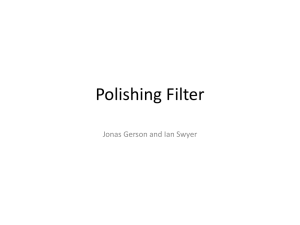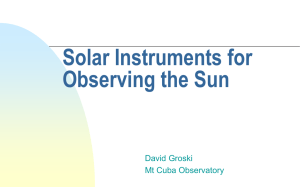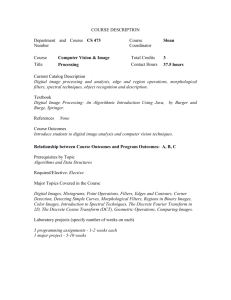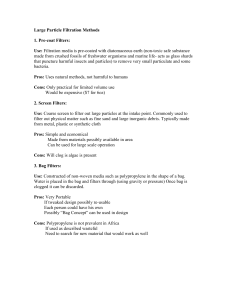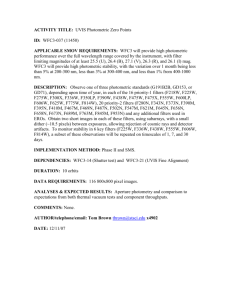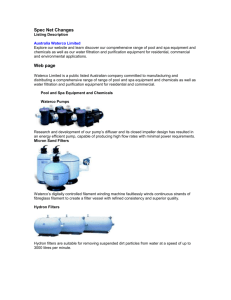УДК622.23.05 RATIONALITY OF USING MODULE FILTERS FOR
advertisement
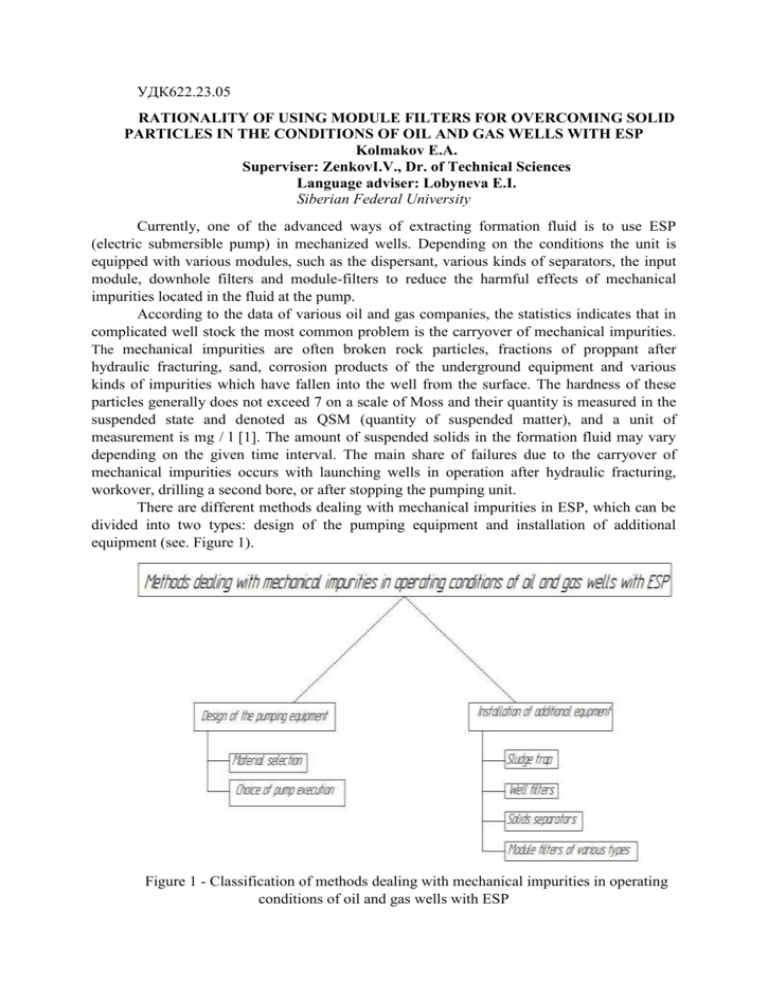
УДК622.23.05 RATIONALITY OF USING MODULE FILTERS FOR OVERCOMING SOLID PARTICLES IN THE CONDITIONS OF OIL AND GAS WELLS WITH ESP Kolmakov E.A. Superviser: ZenkovI.V., Dr. of Technical Sciences Language adviser: Lobyneva E.I. Siberian Federal University Currently, one of the advanced ways of extracting formation fluid is to use ESP (electric submersible pump) in mechanized wells. Depending on the conditions the unit is equipped with various modules, such as the dispersant, various kinds of separators, the input module, downhole filters and module-filters to reduce the harmful effects of mechanical impurities located in the fluid at the pump. According to the data of various oil and gas companies, the statistics indicates that in complicated well stock the most common problem is the carryover of mechanical impurities. The mechanical impurities are often broken rock particles, fractions of proppant after hydraulic fracturing, sand, corrosion products of the underground equipment and various kinds of impurities which have fallen into the well from the surface. The hardness of these particles generally does not exceed 7 on a scale of Moss and their quantity is measured in the suspended state and denoted as QSM (quantity of suspended matter), and a unit of measurement is mg / l [1]. The amount of suspended solids in the formation fluid may vary depending on the given time interval. The main share of failures due to the carryover of mechanical impurities occurs with launching wells in operation after hydraulic fracturing, workover, drilling a second bore, or after stopping the pumping unit. There are different methods dealing with mechanical impurities in ESP, which can be divided into two types: design of the pumping equipment and installation of additional equipment (see. Figure 1). Figure 1 - Classification of methods dealing with mechanical impurities in operating conditions of oil and gas wells with ESP One of the most common and effective mechanical way to protect submersible centrifugal pumps for oil extracting from the effects of particulate matter are module-filters, which are installed between the seal section and the lower section of the pump. The module filters must meet the following requirements: • filtering surface area of the filter must provide the required amount of flow of the formation fluid; • the amount of mechanical impurities flowing to the pump suction should be reduce; • there is high mechanical strength for preventing collapse during transportation, round-trip, in conditions of high pressure and its fluctuations in the bottom hole formation zone and the emergence of hydrodynamic loads; • there is high chemical and corrosion resistance. The properly selected filter type provides: • stability of the well production rate (injectivity); • increase maintenance intervals of the unit. There are four main, common types of filters (see. Figure 2): • net-shaped filters; • gravel filters; • wire filters (frame-shaft); • slotted filters (tubular). a -net-shaped filter; b-gravel filter; с-wire filter; d-tubular filter. Figure 2 - Examples of module filters At the moment there is no uniform theoretical model for selecting filters for the well. The procedure of selecting filters for ESP depending on operating conditions and miningmineral composition of the reservoir has an empirical character at most fields, that is, the selecting filters occurs based on the operating experience in this field or any other with the similar conditions. However, it is possible to rationalize the use of various filters designs in the certain operating conditions. Due to its filtration properties net-shaped filters are used most frequently at the fields of the Russian Federation, because size of removal solids often ranges from 0.1 to 0.3 mm [2]. The new models of this type can be configured to filter particles up to 0.05 mm [3]. The most efficient use of net-shaped filters is their application in rocks with the high content of sand, such as, medium-grained sand, with a particle size of 0.25-0.5 mm, as well as fine-grained sand, with a particle size from 0.1 to 0.25 mm. In such cases the grid of the filter element should be of braid configuration. Gravel filters may be used with a medium-grained sand and fine-grained sand, in which this type of filter is the most effective. In the rocks with a predominance of medium sand such filters are appropriate, but they have some economical disadvantages. The cost of gravel filters is several times higher than that of the net-shaped filters, which calls into question their application in this case from the technical and economical point of view. The use of gravel filters in fine sand is probably the best solution from a purely technical point of view, because they provide both good throughput of the formation fluid and filtration of fine particles. The main advantage of the gravel filters over other types of filters is an ability to use them in large heterogeneity of solid partials [3]. Wire type of module-filters is used in the ESP for protecting from large size mechanical impurities and reducing the probability of getting finer particles to suction of the pump. The use of wire filters in compliance with selection technique promotes effective fluid flow and helps to avoid clogging the filter element. This type of filters is applied in the halfrock unstable formations, crushed stone and pebble rocks with a predominant size of mechanical inclusions of crushed stones and pebbles from 20 to 100 mm, and in the rocks with the high content of gravel and gravelly sand with a particle size from 1 to 10 mm. But the most rational application of this type of filters is their use in the formations, which contain coarse-grained sand with a predominant particle size of 1-2 mm (more than 50% by weight). In this case the triangular profiles wire, when one vertex is directed into the filter, and the other two are located on its outer side is used [1]. It avoids carburization of cracks and compacting rock, vice versa, it stimulates the removal of particles smaller than a filter gap and purification of strained zone from sludge and fine particles. Tubular filters can be with round or slot perforation. This type of filters has many similarities with the design of the wire filters, since in both cases the formation fluid with suspended solids is filtering through the narrow slit. However, the use of classical slotted filters is limited due to the difficulties of manufacturing the holes to match the dimensions of solids. But the tubular filters with round holes may still be used in wells containing large particles such as gravel and pebbles with size of 20 to 100 mm or in case of processing well with using of gravel dusting in the bottom hole of the formation zone. Tubular filters with slotted perforations have much wider application. The location of these slots can be symmetrical, staggered or slot may be arranged horizontally. The module filters with slotted surface where the size of slits would be 1 mm provide good filtering in rocks with gravel and gravelly sand with a particle size from 1 to 10 mm. Slotted filters are applied in cases above mentioned relying on economical expediency, because there is no need for expensive filters with the high degree of filtrating fine particles. The drawback of this type is the lowest setting of porosity compared to other considered module filters design. To sum up if there are mechanical impurities available in the extracting formation fluid use of module filters as a part of the ESP helps us to increase overhaul period of the unit, reduce the cost of round-trip operations and decrease the downtime. The correctly selected type and design of the filter will provide the best technical and technological parameters of wells without breakdown of inflow and the ESP overhaul life. The type and design of the filter is selected depending on the operating conditions and the type of the rock. References 1.Kamaletdinov R.S. Complicated operating conditions of oilfield equipment. Review of existing methods of controlling mechanical impurities. / R.S.Kamaletdinov, A.B.Lazarev. // Engineering Practice: oil and gas production and technical journal .- 2010. - №2. -p. 6-13 2.Shakirov E.I. Experience in the use of technology production and restrictions on the sand formations pack PC deposits of Barsukovskoyeoilfield. / E.I. Shakirov .// // Engineering Practice: oil and gas production and technical journal .- 2010. - №2. -p. 58-64 3. TatProm Holding / Analysis of the effectiveness of filters for the protection of the submersible equipment for oil extraction from mechanical impurities [electronic resource]. URL: http://www.tatpromfilter.ru/statii/Analiz-effektivnosti-filtrov.html (date accessed: 31/03/2015).
